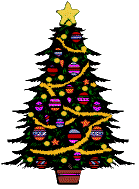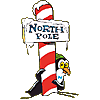



Family Network



"I will hold Christmas in my heart, and try to keep it all the year." - Charles Dickens.
|


Family Network



"I will hold Christmas in my heart, and try to keep it all the year." - Charles Dickens.
|
|
 All About Mothers
 Christmas Traditions Around the World
Norway has its gift-bearing little gnome or elf. Known as Julebukk or "Christmas buck," he appears as a goat-like creature. Julebukk harkens back to Viking times when pagans worshipped Thor and his goat. During pagan celebrations a person dressed in a goatskin, carrying a goat head, would burst in upon the party and during the course of evening would "die" and return to life.
During the early Christian era, the goat began to take the form of the devil, and would appear during times of wild merry-making and jubilation. By the end of the Middle Ages, the game was forbidden by the Church and the state. In more recent times the goat has emerged in the tamer form of Julebukk.
A favorite holiday cookie is called a sand kager is made by mixing 2 cups of butter and sugar, 4 cups of flour, and 1 cup of chopped almonds. This pressed into a tin, baked until golden brown, and cut into squares.
In the dark afternoons, in the Viking tradition, children go from house to house asking for goodies.
Norwegians eat lye-treated codfish, and wash it down with boiled potatoes, rice porridge, gingerbread, and punch.
Norwegians are very close to the North Pole, and they strongly hope for the magic of snow for the holydays! Christmas in Norway begins with the Saint Lucia ceremony on the 13 December. At the crack of dawn, the youngest daughter from each family puts on a white robe with a sash, a crown with evergreens and tall-lighted candles, accompanied by the other children, the boys dressed as star boys in long white shirts and pointed hats. They wake their parents, and serve them coffee and Lucia buns, lussekatter. The custom goes back to a Christian virgin, Lucia, martyred for her beliefs at Syracuse in the fourth century. The Saint Lucia ceremony is fairly recent, but it represents the traditional thanksgiving for the return of the sun.
The Christmas tree, juletre, spruce or pine tree usually, are often decorated with candles, apples, red harts, cornets, straw ornaments, balls of glass and tinsels, all depending on what you like. The homes have a scent of resin, hyacinths, red tulips, spices and tangerines.
Some children, especially in the country still believe in and remember a little gnome or elf, fjøsnissen at Christmas time. He is told to guard all the farm animals, and he plays tricks if the children forget to place a bowl of special rice porridge, risengrynsgrøt, in the barn or outside for him. This is old superstition. Norwegians also love to eat this porridge on the 23 December, lillejulaften, and then it holds a magic almond inside. The one who finds it gets a prize. Some eat the rice porridge for lunch on the 24th. Perhaps in the evening they have some gløgg, it is a spicy drink (you can add some red wine if you like), with raisins and chopped almonds. Julaften, on the 24 December, a lot of people go to church service before they gather at home around the table for a nice Christmas Eve dinner. The dinner can consist of a rib with a good crackling, ribbe, (served with "cabbage à la norvégienne", surkaal, potatoes, carrots, cauliflower, sprouts, prunes and brown sauce), salted and dried ribs of mutton, pinnekjoett, (served with potatoes, carrots and mashed swedes), or lye-treated codfish, lutefisk (served with potatoes, bacon and pea stew). For dessert: rice blended with whipped cream served with a red sauce, riskrem, caramel pudding, cherry mousse, or whipped cream blended with multer (orange, wonderful berries found on the mountain - looks like rasberries).
In the evening Santa Claus, julenissen, arrives with gifts. Often it is snowing. In the days between Christmas and New Years Eve, romjulen, the children sometimes go from house to house in the afternoon asking for sweets, this tradition is called "Christmas buck", julebukk. The tradition harkens back to the Viking times when pagans worshipped Thor and his goat, but just a few children keep up the tradition today.
On Christmas Day a lot of people have a big brunch at noon or dinner in the afternoon for friends and family. It is done the Italian way and can last for several wonderful hours!
Traditional cakes and cookies made at Christmas can be julekake (with raisins), kryddekake, delfiakake, rosettbakels, fattigmann, smultringer, goro, silkekaker, pepperkaker, kokosmakroner. Different nuts, fruits, figs, dates and sweets also belong to the celebration. God Jul! (Merry Christmas!)
Mens.Net | Womens.Net | Mothers.Net | Fathers.Net | Grandparents.Net | Teenagers.Net | Santas.Net | EasterBunnys.Net | JackOLanterns.Net | FatherTimes.Net | StValentines.Net HarvestFestivals.Net | BirthdayCelebrations.Net | ToothFairys.Net
 Please read our Legal Statement and Privacy Policy. |